Discover South Africa: The Big Hole, Table Mountain, and the Nelson Mandela Capture Site
The Big Hole in South Africa:
- Location:
- The Big Hole, also known as the Kimberley Mine, is located in the city of Kimberley in the Northern Cape province of South Africa.
- Kimberley is renowned for its historical significance in the diamond mining industry.
- Formation and History:
- The Big Hole is the result of diamond mining activities that took place between 1871 and 1914.
- Diamonds were discovered in the area, leading to a diamond rush and the establishment of Kimberley as a major diamond mining town.
- The hole was excavated by hand and became one of the largest hand-dug excavations in the world.
- Size and Dimensions:
- The Big Hole has a surface area of about 17 hectares (42 acres) and reaches a depth of 240 meters (790 feet).
- It was dug to extract diamond-bearing kimberlite rock, resulting in a vast open pit.

- Diamond Production:
- The Kimberley Mine, associated with the Big Hole, yielded numerous diamonds, including some of the world’s most famous and valuable diamonds.
- Notable diamonds found in this area include the Excelsior, the Kimberley Octahedral, and the famous Star of South Africa.
- Mining Methods:
- In the early days of diamond mining, the extraction process involved manual labor and hand tools. Miners dug deeper into the earth to reach the diamond-rich kimberlite pipes.
- Over time, more sophisticated mining methods replaced manual labor as technology advanced.
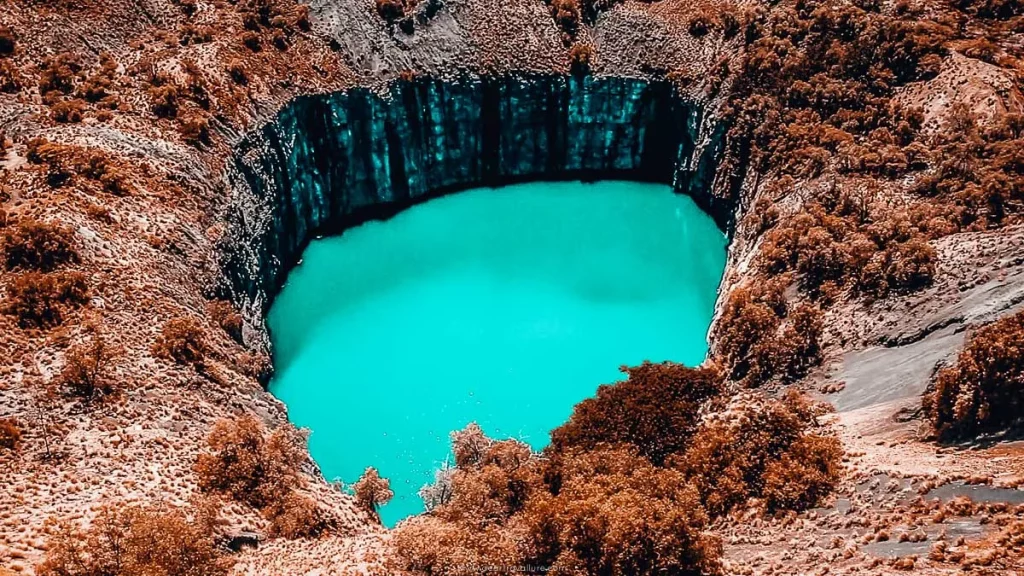
- Tourist Attraction:
- Today, the Big Hole is a major tourist attraction and part of the Kimberley Mine Museum.
- Visitors can take guided tours to learn about the history of diamond mining in the region and see exhibits related to the industry.
- The museum provides insights into the lives of the miners and the impact of the diamond rush on the development of Kimberley.

- Surrounding Attractions:
- The Big Hole is surrounded by other historical sites and attractions, including period buildings and monuments from the diamond rush era.
- Kimberley is also home to the William Humphreys Art Gallery, Magersfontein Battlefield, and the Wildebeest Kuil Rock Art Centre.
- Preservation Efforts:
- Efforts have been made to preserve the Big Hole as a heritage site and to showcase its historical significance.
- The site serves as a reminder of the impact of diamond mining on the landscape and the development of the diamond industry in South Africa.
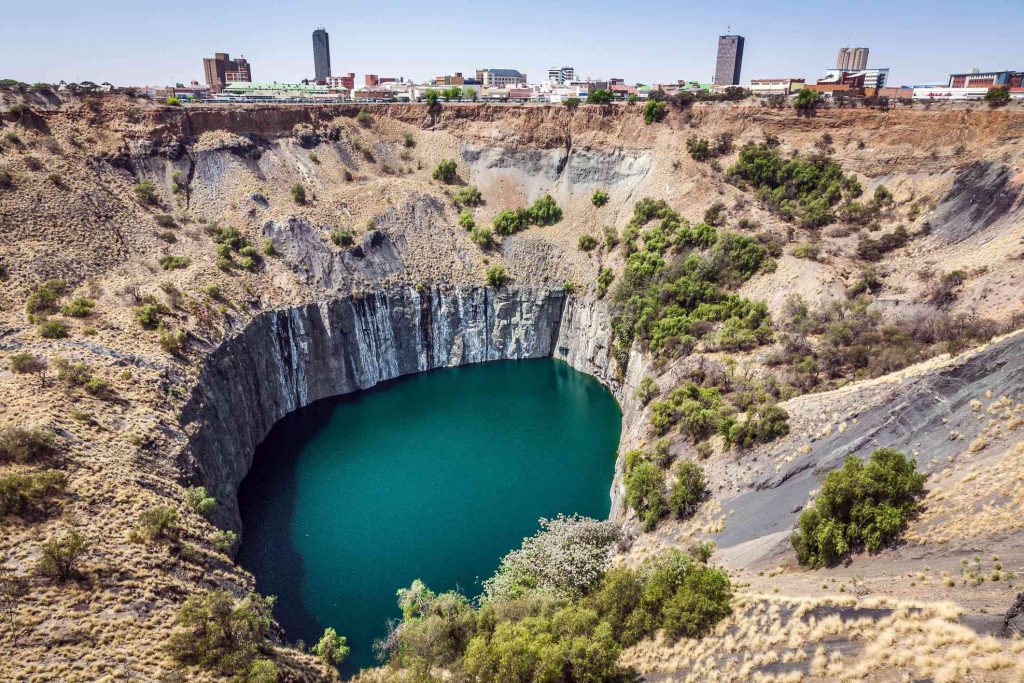
The Big Hole stands as a testament to the diamond rush that shaped Kimberley’s history and played a significant role in the global diamond trade. Today, it stands as both a historical landmark and a unique tourist destination.
Explore Fun Facts about the Table Mountain in Cape Town SA
History of Table Mountain:
Formation: Table Mountain is a flat-topped mountain that overlooks Cape Town, South Africa. It is part of the Table Mountain National Park and is known for its distinctive flat summit.
Geological Origin: The mountain’s rocks are estimated to be over 600 million years old, making them some of the oldest in the world. The flat plateau is made up of sandstone and is often covered by clouds, creating the effect known as the “tablecloth.”
Early Inhabitants: The indigenous KhoiSan people were the first known inhabitants of the Table Mountain area. They referred to the mountain as “Hoerikwaggo,” meaning “Mountain in the Sea.”
Colonial Era: In 1652, when European settlers arrived in the Cape, the mountain became a landmark for ships entering Table Bay. The Dutch navigator Antonio de Saldanha was the first recorded European to reach the summit in 1503.
Flora and Fauna: Table Mountain is home to a unique and diverse range of plant and animal species. The fynbos vegetation found on the mountain is part of the Cape Floral Kingdom, a UNESCO World Heritage site.
Cableway: The Table Mountain Aerial Cableway, which opened in 1929, provides a convenient way for visitors to reach the summit. The cableway offers breathtaking views of Cape Town and the surrounding coastline.
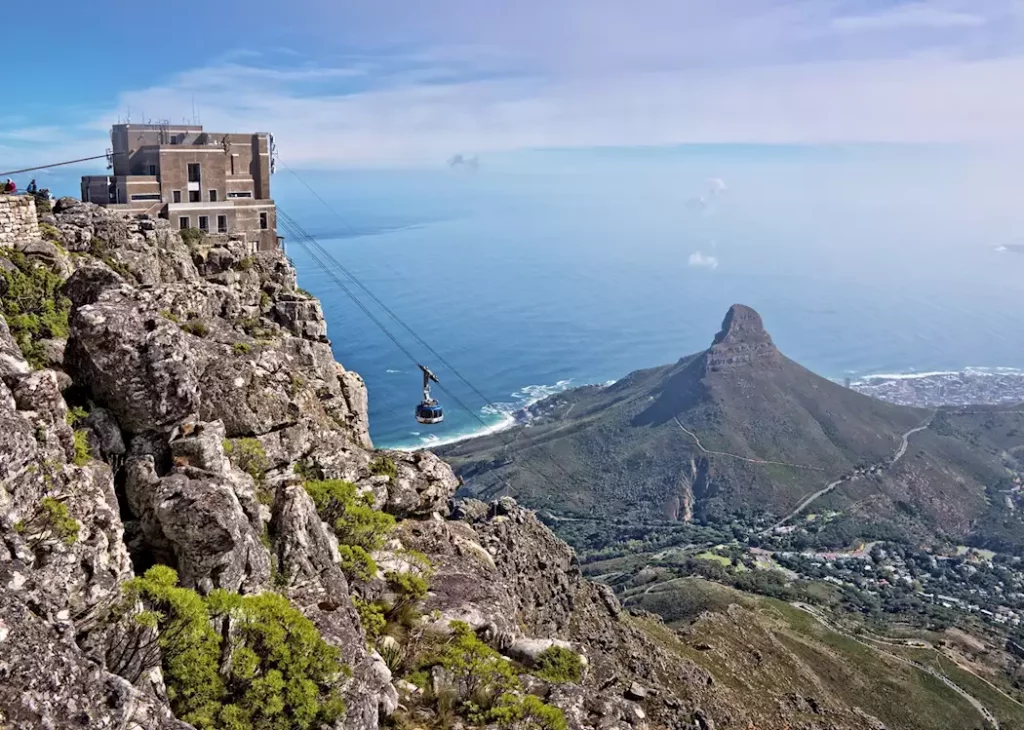
Fun Facts about Table Mountain:
Flat Summit: The flat plateau of Table Mountain covers an area of about 3 square kilometers (1.2 square miles). It offers panoramic views of Cape Town, Table Bay, and the Cape Peninsula.
Tablecloth Effect: The “tablecloth” phenomenon occurs when clouds roll over the mountain’s flat top, resembling a tablecloth. This occurs due to the moist air from the Atlantic Ocean meeting the mountain’s slopes.
Floral Diversity: Table Mountain is home to an incredible diversity of plant life, with over 2,200 species of plants, many of which are found nowhere else in the world.
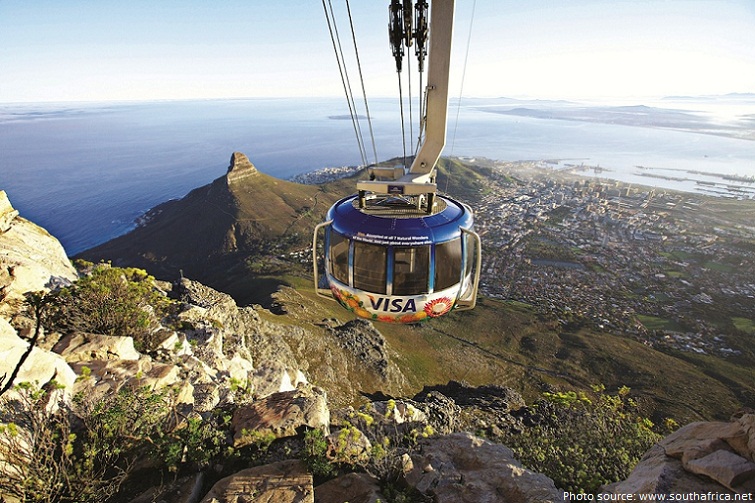
Fauna: The mountain is inhabited by various animal species, including dassies (rock hyraxes), porcupines, snakes, and a variety of bird species.
New7Wonders: In 2011, Table Mountain was officially named one of the New7Wonders of Nature, following a global poll. It is considered one of the most iconic natural landmarks in the world.
Hiking Trails: Table Mountain offers numerous hiking trails of varying difficulty levels. Popular routes include Platteklip Gorge, India Venster, and Skeleton Gorge.
Biodiversity Hotspot: The Cape Floral Kingdom, of which Table Mountain is a part, is one of the world’s six floral kingdoms and is recognized for its exceptional biodiversity.
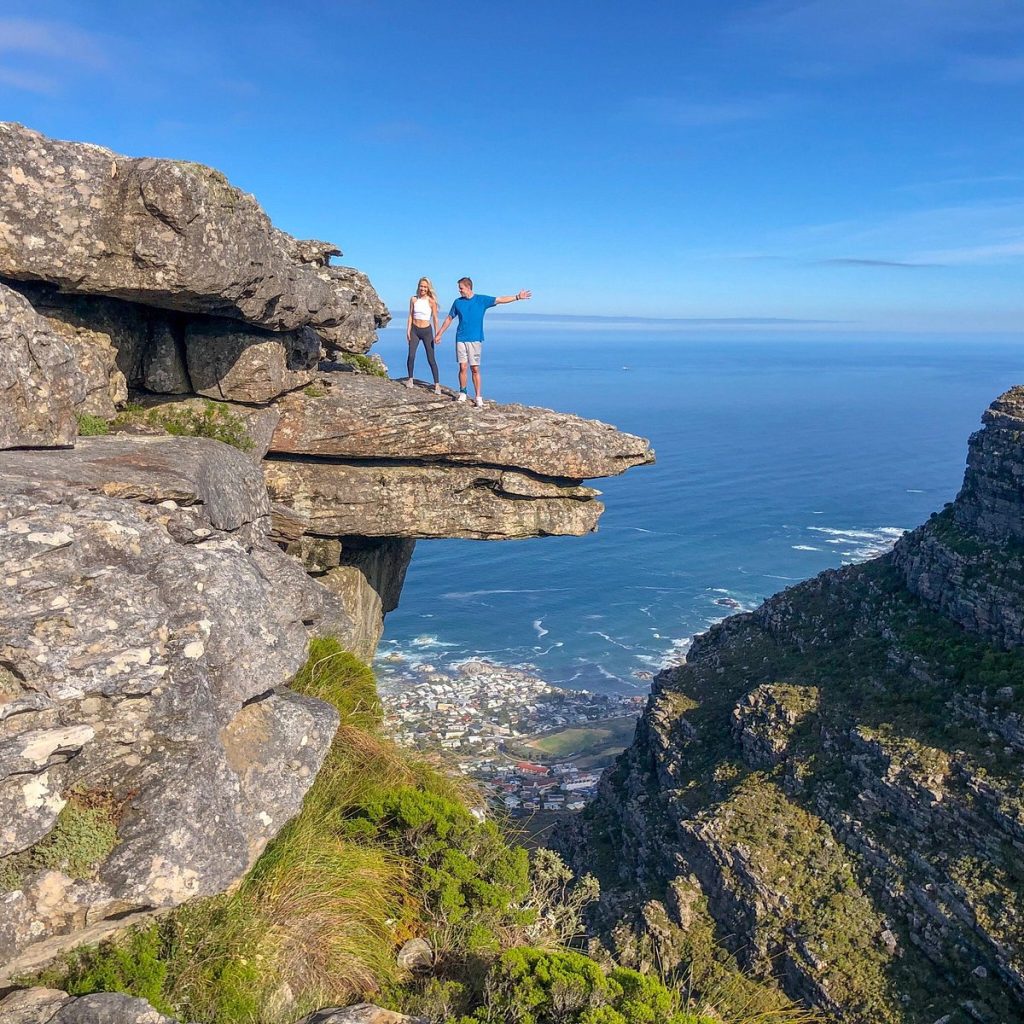
Table Mountain continues to be a symbol of Cape Town and a popular destination for locals and tourists alike, offering not only natural beauty but also opportunities
A Deep Dive into the Nelson Mandela Capture Site – A Historical Location in South Africa
The Nelson Mandela Capture Site is a historically significant location in South Africa, commemorating the arrest of Nelson Mandela, an iconic figure in the struggle against apartheid. Here are key details about the Nelson Mandela Capture Site:
- Location:
- The Nelson Mandela Capture Site is situated near the town of Howick in the KwaZulu-Natal province of South Africa.
- It is located on the R103 road, approximately 5 kilometers outside of Howick.
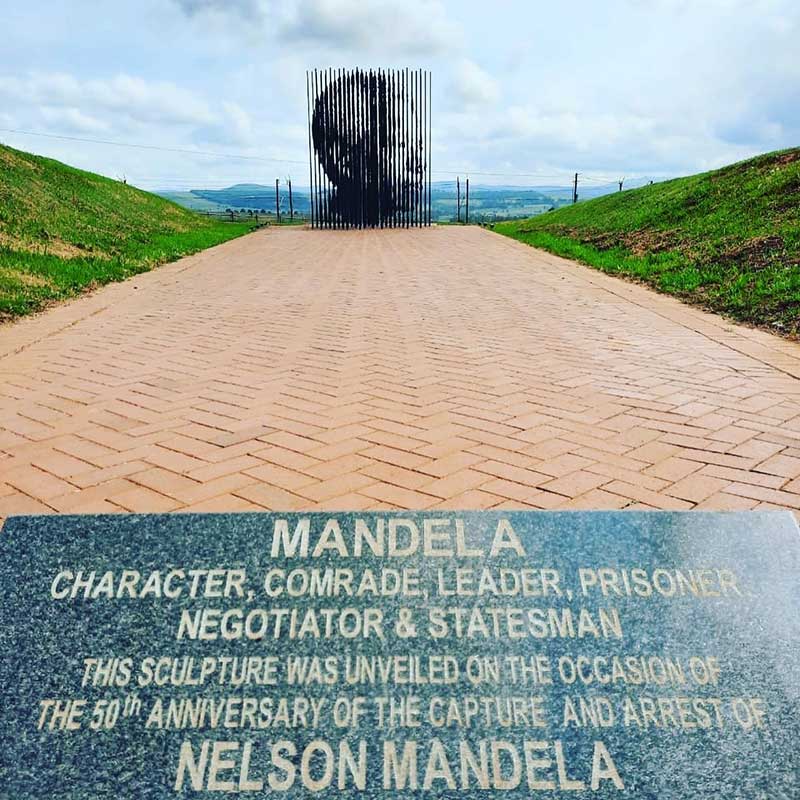
- Historical Significance:
- The site marks the location where Nelson Mandela, the anti-apartheid activist and future president of South Africa, was apprehended by the apartheid police on August 5, 1962.
- Mandela’s arrest was a turning point in the struggle against apartheid and marked the beginning of his 27 years of imprisonment.
- Art Installation – The Mandela Capture Site Sculpture:
- The highlight of the Nelson Mandela Capture Site is a unique art installation known as “The Mandela Capture Site Sculpture.”
- The sculpture was created by artist Marco Cianfanelli and Jeremy Rose. It consists of 50 steel columns, each varying in height, that come together to form a portrait of Nelson Mandela when viewed from a specific angle.
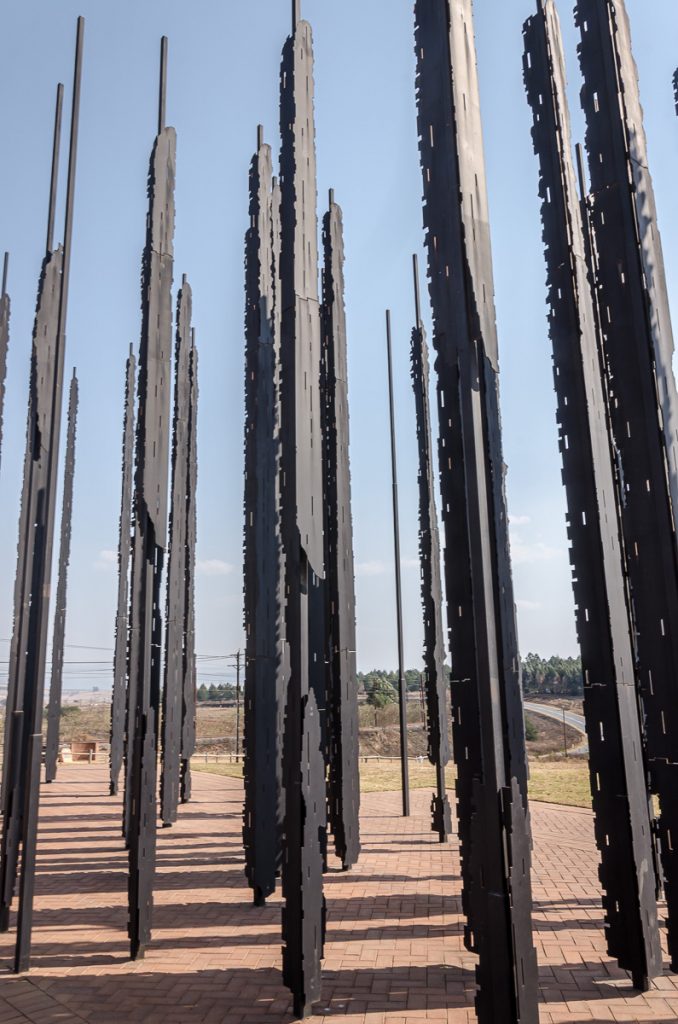
- Symbolism of the Sculpture:
- The sculpture is symbolic of Mandela’s journey and the role of collective efforts in the fight for freedom.
- The varying heights of the columns represent the diverse group of people who contributed to the anti-apartheid struggle.
- Visitor Center:
- The site features a visitor center that provides additional information about Nelson Mandela, the history of apartheid, and the significance of the capture site.
- Exhibitions and displays offer insights into the political climate of the time.
- Mandela Monument:
- In addition to the sculpture, there is a monument at the site dedicated to Nelson Mandela.
- The monument recognizes Mandela’s legacy as a leader, peacemaker, and symbol of reconciliation.
- Educational and Cultural Hub:
- The Nelson Mandela Capture Site serves as an educational and cultural hub, attracting visitors interested in South Africa’s history and the struggle for freedom.
- Educational programs and events are often hosted at the site.
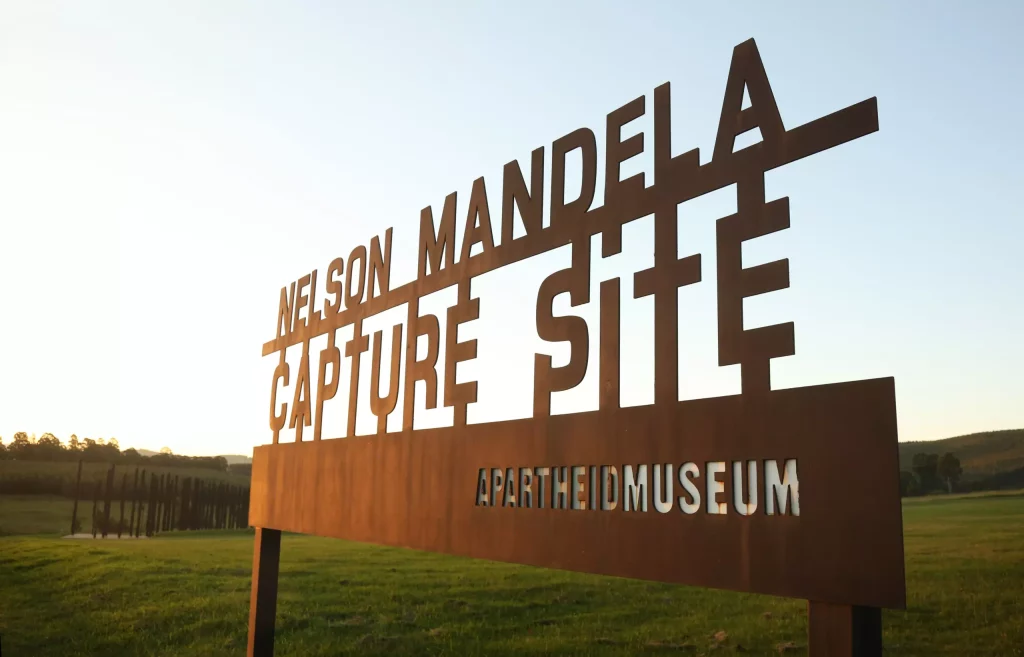
- Tourist Attraction:
- The site has become a popular tourist attraction, drawing both locals and international visitors.
- Visitors can explore the outdoor sculpture, the museum, and engage with the rich history represented at the capture site.
- Reflective Space:
- The Nelson Mandela Capture Site provides a reflective space where visitors can contemplate the sacrifices made during the struggle against apartheid and celebrate the triumph of justice and equality.
The Nelson Mandela Capture Site stands as a powerful testament to the resilience of the human spirit in the face of oppression and the ongoing journey towards freedom and justice.
Add a Comment
You must be logged in to post a comment.

